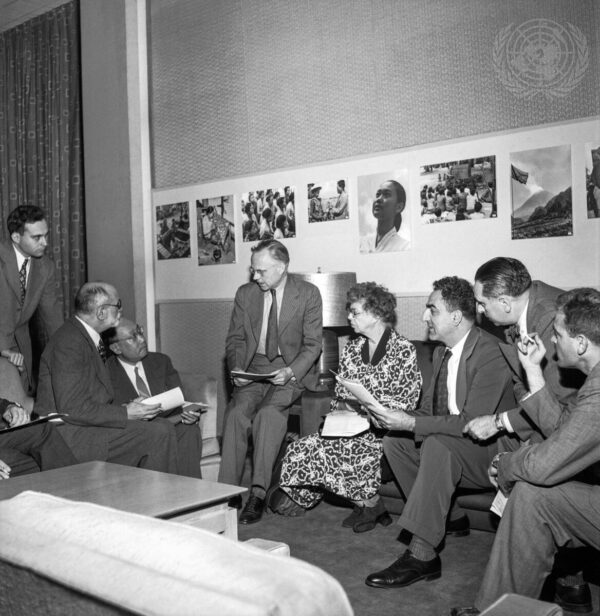
Human Rights 101: The Universal Declaration of Human Rights
In this lesson, students will learn how human rights differ from civil rights and gain introductory knowledge of how the international community united to define and defend human rights.
September 2, 1945
Japan surrenders and World War II officially comes to a close.
October 24, 1945
Following the San Francisco Conference, the United Nations’ charter is officially accepted by member nations and the organization is officially formed on this date.
June 21, 1946
The Economic and Social Council (ECOSOC) adopted Resolution 9(II) that established the Commission on Human Rights and tasked the newly formed group with preparations for the creation of an “international bill of rights.”
January 24, 1947
In January of 1947, the Human Rights Commission met in New York for their first session. The Commission elected Eleanor Roosevelt as the Chairman, P.C. Chang as Vice-Chair, and Charles Malik as Rapporteur. These three officers, with the additional support of Secretary of the Commission John Humphrey, were tasked with writing a draft to be submitted to the second session.
March 24, 1947
Following the submission of the Human Rights Commission’s report on their first session, some members of the ECOSOC called for an expansion of the drafting committee. Chairman Roosevelt then wrote to the ECOSOC on March 24th to confirm her intention to expand the drafting committee.
June 9–June 25, 1947
The newly expanded Drafting Committee met for the first time to review the first draft documents. Various members were tasked with re-arranging the document’s organization, re-drafting language based on discussions within the Committee, and moving the draft from an outline to a full document.
December 2–December 10, 1947
The Commission creates three separate groups to work on the three aspects of an International Bill of Rights: a Declaration, a Convention, and Implementation plans. A request was also sent out for comments and feedback from all member states. This call for input went out to everyone from other non-profits to individual citizens of member organizations.
May 3–May 21, 1948
During this session, the committee considered the comments submitted on the first draft. A new draft, titled an “International Declaration of Human Rights,” was included in the final report along with a draft covenant. Plans for implementation would have to wait.
May 24–June 18, 1948
The re-drafted Declaration was adopted following a vote of 12 in favor and 4 abstentions.
September 30–December 7, 1948
A committee is created to review the draft Declaration. A total of 168 proposed resolutions were submitted during the review and debate phase. Finally, the draft passed and was referred to the full General Assembly.
December 10, 1948
After final discussions and ammendment requests, ate on the night of December 10, 1948 the newly renamed “Universal Declaration of Human Rights” was approved by a vote of 48 in favor, 0 opposing, and 8 abstaining.
Featured in

In this lesson, students will learn how human rights differ from civil rights and gain introductory knowledge of how the international community united to define and defend human rights.